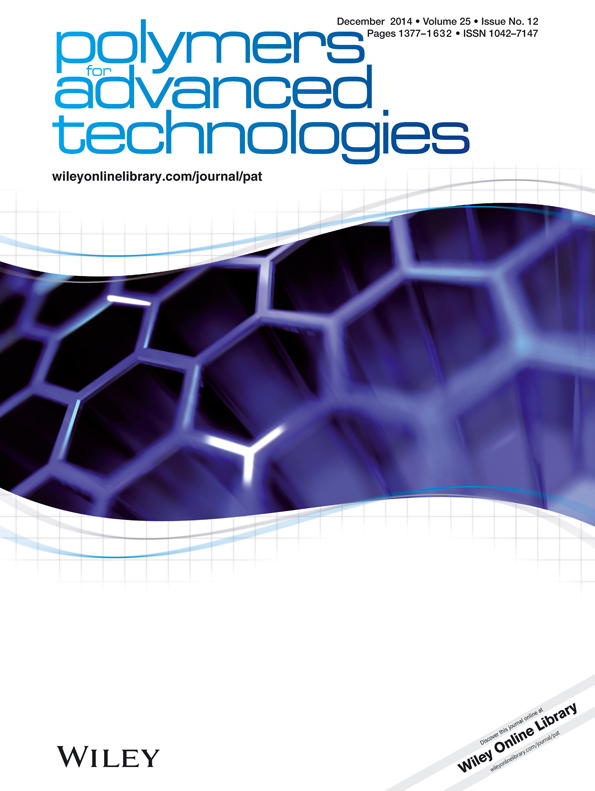Effects of melamine polyphosphate and halloysite nanotubes on the flammability and thermal behavior of polyamide 6
Abstract
Melamine polyphosphate (MPP) and halloysite nanotubes (HNT) were introduced to polyamide 6 (PA6) by melt blending in order to improve the fire resistance. PA6 composite containing 12% flame retardants with good spinnability was obtained. The flammability of PA6 composite was characterized by limiting oxygen index (LOI), UL-94 vertical burning and cone calorimeter (CONE) tests. The results indicated that the LOI value could reach 24.0 vol.% and UL-94 rating could achieve V2 level at the presence of 12% flame retardants. CONE data demonstrated that peak heat release rate was significantly reduced from 554 kW/m2 of neat PA6 to 368 kW/m2 of the sample containing flame retardants. Thermal analysis indicated that the thermal stability and char formation were improved by the presence of flame retardants. The morphology of residue char was characterized by scanning electron microscopy; and it suggested that a network-structured protective char layer had been formed. The possible synergism between MPP/HNT and their flame retardant mechanism was also analyzed and discussed. Copyright © 2014 John Wiley & Sons, Ltd.




